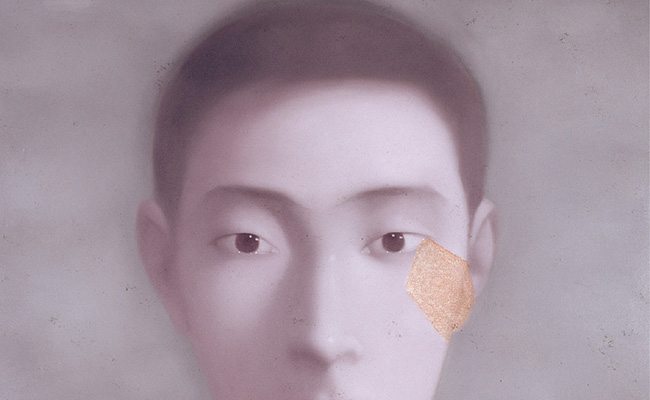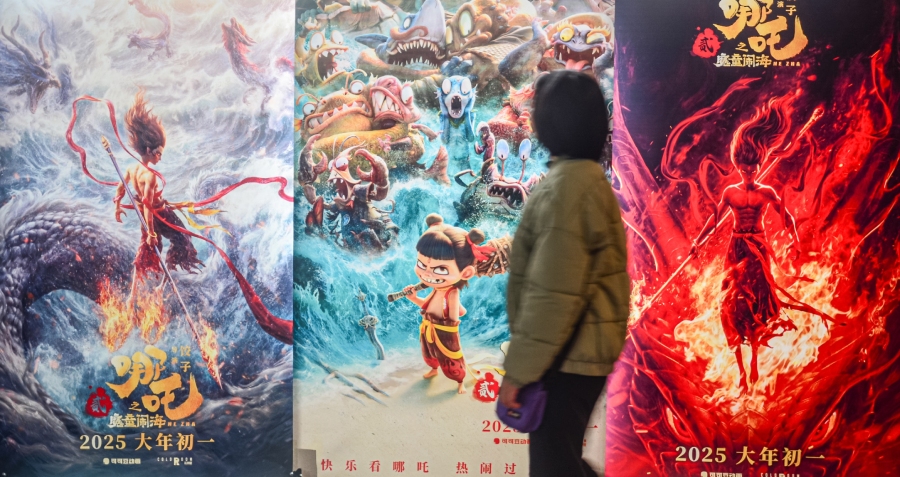Which artists are making an impression on the Chinese art scene as tastes and sensibilities evolve?
The terrorist attacks of September 11, 2001 on the World Trade Center towers and the Pentagon brought the world to a standstill. One unexpected commentator was Chinese artist Xu Bing. Xu gathered a bag of dust from Ground Zero in New York City to use in a 2002 installation for the National Museum and Gallery of Cardiff in Wales called Where does the Dust Itself Collect? Bing sprinkled the dust in a room over stencils of letters that wrote out lines from a 17th-century Chinese Zen Buddhist poem. Removing the stencils, the floor of the exhibit contemplated: “As there is nothing from the first, where does the dust itself collect?”
In the past decade, the Chinese art scene has progressed from ‘budding’ to ‘thriving’. In 2008, Christie’s auctioned Zeng Fanzhi’s Mask Series No. 6 for $9.7 million, breaking records worldwide for Asian contemporary art sales. On the who’s who in China, artists can seemingly be measured in a broad spectrum, between the likes of Fanzhi, whose Mask series are at once titillating and frightening in their deliberately vulgar and subversive faces,and Zao Wou-ki, whose oil paintings, remarkable in their quiet power, have only recently been discovered by art collectors in the Far East.
Eike Stratmann, a German expat whose background in art led her to work in art procurement for the Shanghai 2010 World Expo, highlighted Guangzhou Academy of Fine Arts’ recent graduate Sun Yu as a favorite. When asked why she included Yu, Stratmann says the artist’s portraits of lost men unfold under closer inspection. “[At first] they don’t seem to care what’s going around them—mostly their eyes stay closed or the eyes are painted so vaguely that they never seem to look out of the painting—but when you have a second look and come closer, you will discover more and more color. The longer you look at [them], the more you can see subtle irony.”
Potent and varied subject matter seem to come forth all at once. After decades of seclusion, China’s art scene has since been forced to reckon with the fall of the Soviet Union, the rise of the information age, and globalization. Art historians have noted that the deluge of Westernization in the advent of the digital revolution and a flattening world was at once a blessing and a tragedy for Chinese artists. There was—and in some ways, is—a need deeply felt by artists throughout China to assert themselves against a national psyche that has Westernized so quickly and so intensely. And it is with this context that China’s seminal art genres, Cynical Realism and Political Pop, took shape.
Political Pop is perhaps best summarized by the proliferation of Mao’s image in contemporary Chinese art as an Andy Warhol silkscreen painting akin to the American artist’s Marilyn Monroe or Campbell Soup series. Cynical Realism is most recognizable in famed Yue Minjun’s iconic laughing men, which make their strongest statement in his piece Execution, which sold for $5.9 million at Sotheby’s London in 2007. The West’s rather expensive fascination with the stark, and at times sensational, depictions of Chinese life have preceded a healthy evolution in China’s own art procurement market.
As the Chinese art scene has matured, the culture of artists and Chinese art collectors themselves have slowly migrated past the deliberate political caricatures behind Cynical Realism and Political Pop to more subtle themes.
This shift is well illustrated by the recent discovery of Zao Wou-ki among Chinese buyers. Zao’s abstract oil paintings do much less to thrust themselves in the eye of the viewer and more to gently draw them in. The total transaction value of Zao’s paintings at public auctions is an estimated $98.5 million, according to Hurun Report’s 2012 ranking of Chinese art.
Is success in China determined by critical or financial success? In Zao’s case, he has it all: highly priced work and regard in art’s most well-known enclaves. Alain Juoffroy, famed French poet and art critic, said of Zao’s work:
“The works of Zao Wou-ki clearly reflect a Chinese view of the universe. Their distance and haziness represent a focus on the contemplative mood itself, as opposed to the thing contemplated, an approach that has come to be accepted by the young stars of our art world as well as by society at large.”
In the West, critics can play a significant part in buoying up artists because successis traditionally tied to relevance, or the level of discussion surrounding the artist. In the art world, intellectual notoriety can be crucial in leading to more exhibitions and purchases from collectors. China’s enfant terrible Ai Weiwei, for instance, may be the most visible Chinese artist on the global stage. Ai has secured solo exhibitions in some of the world’s most venerated art spaces in the past five years, including Duisburg’s Museum DKM (2010), Munich’s Haus der Kunst (2009), Tokyo’s Mori Art Museum (2009), and Groninger Museum in Groningen (2008).
But now that many mainland buyers can outbid collectors from elsewhere, there can be other factors aside from political dissidence and statements that may determine the fame, or notoriety as it were, of an artist in and of China. As Chinese collectors grow increasingly bold in selecting works from emerging artists, a lack of discussion and clout no longer precludes the possibility of success.
“Viewing art is a very personal experience. For collectors, there really is no guarantee that a piece will appreciatein value, so what we try to do is stress to our clients to work with someone with a ‘good eye’. But what you’re really looking for is evolution—you don’t want the same smiling face in each painting,” says Megan Connolly of ChART Contemporary in Beijing, which accommodates buyers with varying degrees of wealth.
One artist that has provided such evolution is Zhang Xiaogang. Though his portraits can be largely characterized as gray and bi-chromatic, his variations on his seemingly nondescript faces continually force the audience to come to terms with the fact that these subjects have character in spite of themselves. A painting by the now renowned Sichuan Fine Arts Institute alumnus used to go for about $200 in the early 1990s; the latest sale at Christie’s went for over $2 million.
“In the last 20 years there has been a pivot from politically charged art to more socially charged pieces,” says Connolly. “What is happening now is that there is a desire for a more minimal approach to art because there has been an over-saturation of consumerism. Artists are returning to traditional Chinese materials in a bold contemporary way to examine the impact of social issues, like modernization or the one-child policy.”
When China first opened its doors, it seemed to Western critics that Chinese artists were merely responding to Western traditions. In the last decade, however, the art scene has metamorphosed far beyond that as Chinese artists increasingly contend with themselves above all else, and this is a trend that art enthusiasts are responding to with piqued interest.




















